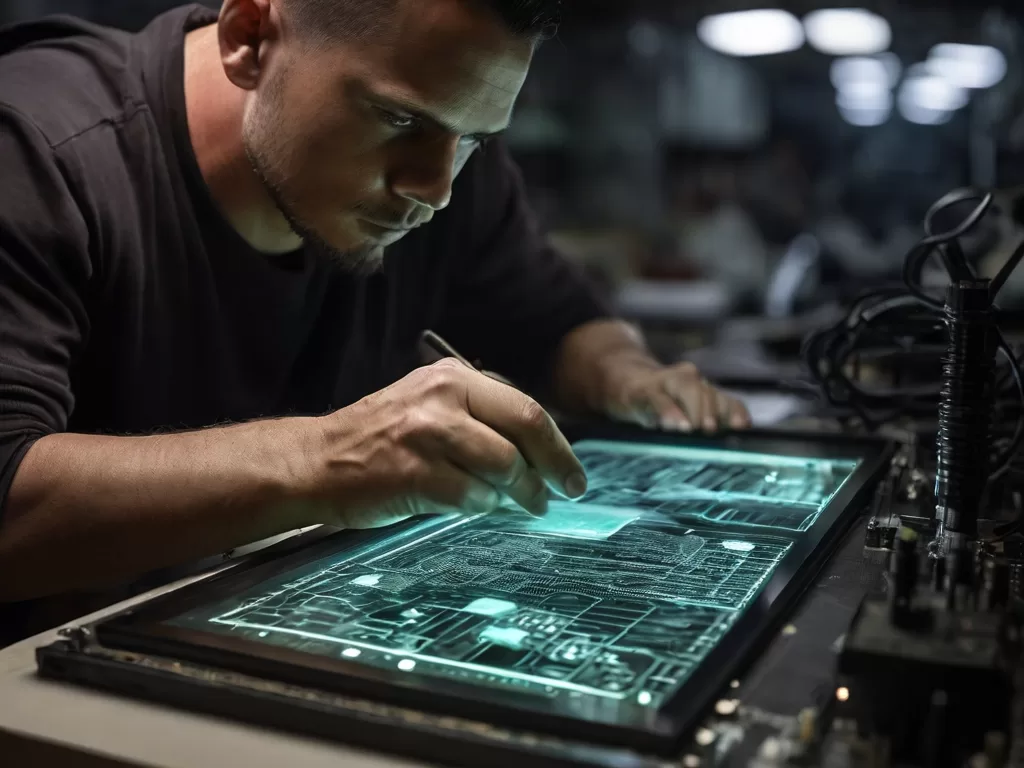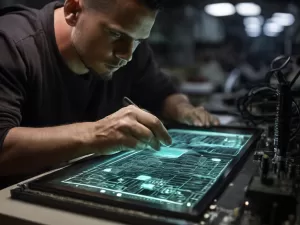5 Essential Tips for Maintaining Your SMD Screen
Introduction
SMD (Surface-Mounted Device) screens are a significant investment, offering high-resolution displays that enhance everything from digital signage to corporate presentations. But like any technology, they require proper care to perform at their best over time. Regular maintenance not only extends the lifespan of your SMD screen but also ensures it continues to deliver crisp, vibrant visuals. In this guide, we’ll explore five essential tips to help you maintain your SMD screen and protect your investment.
Understanding Your SMD Screen
Before diving into maintenance tips, it’s important to have a basic understanding of what makes SMD screens unique. SMD screens are made up of tiny LEDs mounted directly onto the surface of a printed circuit board. This design allows for incredibly detailed and bright displays, making them ideal for a variety of settings, from retail environments to large-scale video walls. Understanding the technology behind these screens can help you better appreciate the importance of proper maintenance.
Tip 1: Regular Cleaning
One of the simplest yet most effective ways to maintain your SMD screen is through regular cleaning. Dust, fingerprints, and other debris can accumulate on the screen, affecting its brightness and clarity. To keep your screen looking its best, it’s important to clean it regularly—but carefully.
Start by turning off the screen to prevent any damage from static electricity. Use a soft, lint-free microfiber cloth to gently wipe the surface. For stubborn spots, lightly dampen the cloth with a mixture of distilled water and isopropyl alcohol, but avoid spraying liquids directly onto the screen. Harsh chemicals and abrasive materials should never be used, as they can scratch the screen or damage the delicate electronics.
Tip 2: Avoiding Exposure to Extreme Conditions
SMD screens are designed to be durable, but they’re not invincible. Exposure to extreme temperatures, high humidity, and direct sunlight can lead to serious damage. For instance, excessive heat can cause the screen to overheat, leading to pixel burnout or even total failure. Conversely, high humidity can lead to condensation inside the screen, potentially shorting out the electronics.
To protect your SMD screen, make sure it’s installed in an environment that maintains a stable temperature and humidity level. If your screen is used outdoors or in an area with fluctuating conditions, consider investing in protective enclosures or climate control systems. These measures can prevent environmental damage and ensure your screen remains in optimal condition.
Tip 3: Regularly Check Connections and Cables
The performance of your SMD screen is heavily reliant on the integrity of its connections and cables. Over time, connections can loosen, and cables can suffer from wear and tear, leading to issues like flickering, signal loss, or even complete screen failure.
For maintaining your SMD Screen regularly inspect all cables and connections for signs of damage, such as fraying or corrosion. Ensure that all connections are secure and that there are no loose cables. If you notice any issues, replace the damaged cables immediately. Using high-quality, durable cables can also help reduce the risk of connection problems in the future.
Tip 4: Software Updates and Calibration
Your SMD screen’s performance isn’t just about the hardware; the software also plays a crucial role. Manufacturers often release software updates that can improve performance, add new features, or fix bugs. Staying on top of these updates ensures your screen operates smoothly and efficiently.
Additionally, regular calibration is essential for maintaining the quality of your display. Over time, the colors and brightness of your screen may drift from their original settings, leading to a less vibrant image. Calibration tools can help you adjust the screen settings to restore optimal picture quality. Some screens come with built-in calibration software, while others may require external tools or professional calibration services.
Tip 5: Professional Maintenance and Troubleshooting
While regular DIY maintenance is important, there are times when it’s best to call in a professional. Scheduled professional maintenance can catch potential problems early, before they lead to costly repairs or downtime. Professionals have the tools and expertise to perform deep cleaning, comprehensive diagnostics, and precise calibrations that go beyond what most users can do on their own.
If your screen shows signs of serious issues, such as persistent dead pixels, image retention, or unusual noises, professional troubleshooting is recommended. Attempting to fix these problems without the proper knowledge can lead to further damage. By entrusting your SMD screen to a certified technician, you can ensure that any repairs are done correctly and that your screen continues to perform at its best.
Common Mistakes to Avoid During Maintaining Your SMD Screen
Even with the best intentions, it’s easy to make mistakes when maintaining your SMD screen. Some common errors include using the wrong cleaning products, ignoring small issues until they become big problems, and neglecting software updates. To avoid these pitfalls, always follow the manufacturer’s guidelines for cleaning and maintenance, and address any issues as soon as they arise. Regular attention to both the hardware and software aspects of your screen will prevent many common problems.
The Role of Warranties and Service Contracts
Understanding your screen’s warranty is crucial for managing maintenance costs. Most warranties cover defects in materials and workmanship but may exclude damage caused by improper maintenance or extreme conditions. If your screen is still under warranty, ensure that your maintenance practices comply with the warranty terms to avoid voiding it.
In addition, consider investing in a service contract. These contracts often include regular maintenance visits, priority repair services, and extended coverage that goes beyond the standard warranty. Service contracts can provide peace of mind, knowing that professional help is just a call away.
Signs It’s Time for a Screen Replacement
Despite your best efforts, there may come a time when your SMD screen needs to be replaced. Signs that it’s time for a replacement include frequent breakdowns, significant loss of brightness or color accuracy, and the presence of numerous dead pixels. If repairs are becoming increasingly frequent and costly, it might be more cost-effective to invest in a new screen. When this time comes, you can rely on your experience maintaining the current screen to ensure the next one lasts even longer.
Conclusion
Maintaining your SMD screen doesn’t have to be complicated, but it does require consistent effort. By following these five essential tips—regular cleaning, avoiding extreme conditions, checking connections, staying on top of software updates, and investing in professional maintenance—you can ensure your screen delivers high-quality performance for years to come. Remember, a well-maintained screen not only looks better but also saves you money in the long run by reducing the need for costly repairs and replacements. You can contact professionals at BIASMD.COM for maintaining your SMD Screen.
FAQs
1. How often should I clean my SMD screen?
- It’s recommended to clean your screen every few weeks or whenever you notice dust and smudges affecting the display. Regular cleaning helps maintain optimal image quality.
2. Can I use household cleaning products on my SMD screen?
- No, household cleaning products can damage the screen’s surface. Always use a microfiber cloth and a solution of distilled water and isopropyl alcohol for safe cleaning.
3. What should I do if my SMD screen shows signs of pixel damage?
- If you notice pixel damage, it’s best to contact a professional technician. They can assess the damage and recommend repair or replacement options.
4. How long can a well-maintained SMD screen last?
- With proper maintenance, an SMD screen can last several years, often between 5 to 10 years, depending on usage and environmental conditions.
5. What are the benefits of having a professional maintenance contract?
- A professional maintenance contract provides regular inspections, priority repairs, and expert care, ensuring your screen remains in top condition and reducing the risk of unexpected breakdowns.
Take the next step towards creating stunning visual experiences with SMD screens from SMDLED.PK. Contact us today to learn more and get started on your journey to unparalleled visual excellence!
Looking for premium SMD screens and professional display solutions? SMDLED.PK is your trusted partner for state-of-the-art SMD technology. Explore our top-quality products like the stunning Leyard HDR 4K SMD Video Wall for crystal-clear visuals, the versatile MSA Plus SMD LED Screen Module, the sleek MSA Ultra Thin SMD LED Screen Module for modern setups, the durable MSG Outdoor SMD LED Screen Module, and the efficient MSG Indoor SMD LED Screen Module perfect for indoor environments.
We also offer exceptional Outdoor SMD Screens, Indoor SMD Screens, Flexible SMD Screens for creative designs, Cabinet SMD Screens for secure setups, Signpole SMD Screens for advertising, and stunning SMD Video Walls for large-scale visual impact. With SMDLED.PK, experience reliability, superior technology, and tailored solutions for all your display needs. Visit us today and transform your spaces with unparalleled visual excellence!


